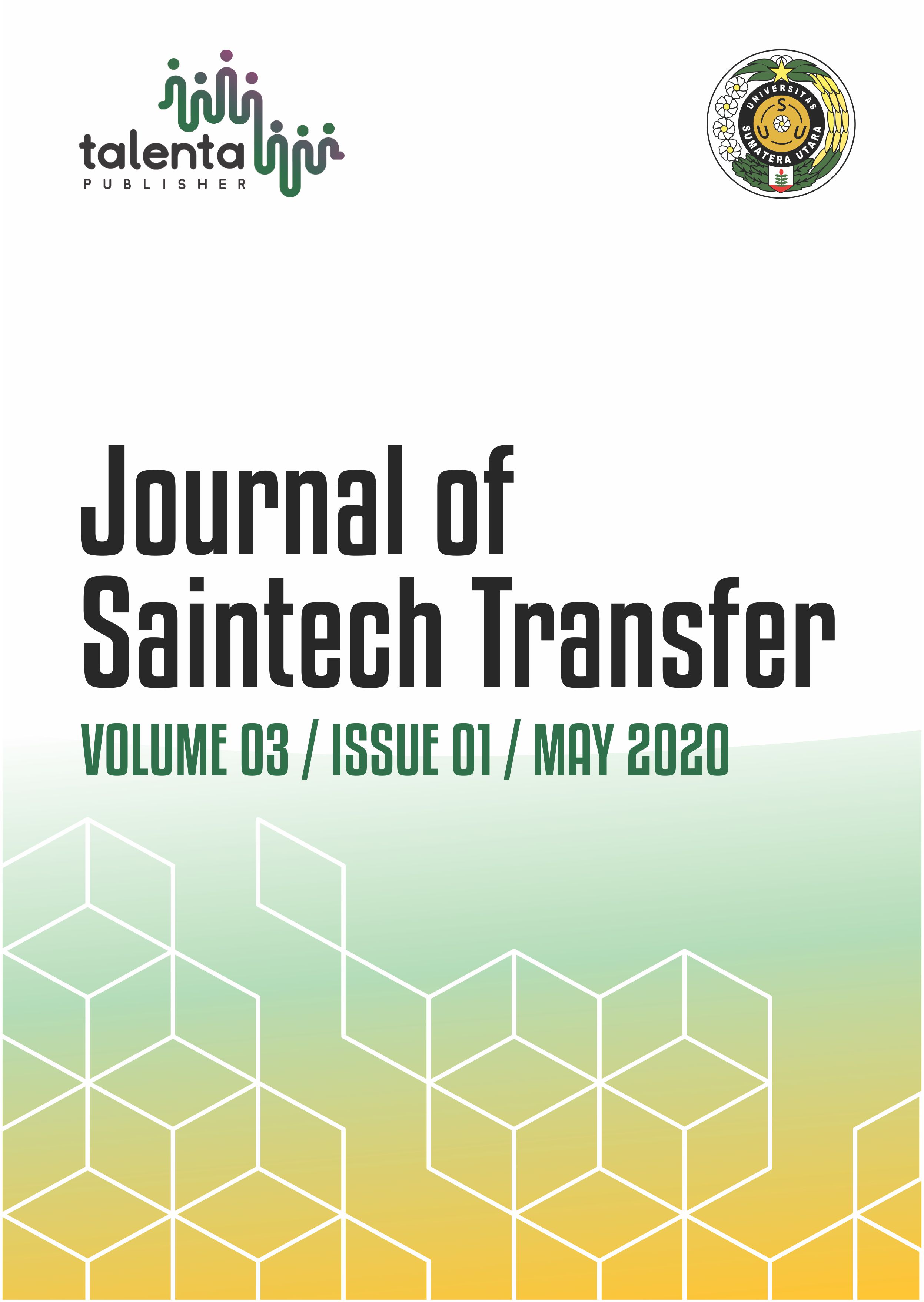Environmental Education for Early Childhood Through Planting Activities in Khansa Kindergarten (TK Khansa) Medan
DOI:
https://doi.org/10.32734/jst.v3i1.3916Keywords:
Childhood, Environmental education, Garden, PlantsAbstract
The school garden can be used for planting various types of plants. So that the use of land is more optimal, then one of the efforts that can be done is to invite students to plant various types of plants, such as vegetables, ornamental plants and fruits as well as medicinal plants. These plants can be placed in the school garden, both in the front and in the back. This activity aimed to provide environmental education for early childhood through planting various types of plants and introducing various types of plants in early childhood and to increase the type of vegetation/plants in the front and back yards of TK Khansa to make it look greener and more beautiful. There were some steps of activities, namely: preparation of planting media, planting, and harvesting of fast-growing type of vegetables. Based on the results of the activities, that the children were very enthusiastic and very happy through planting various types of plants in their school grounds. In addition, with this activity, the situation and the conditions in the Khansa Kindergarten School environment becomes more beautiful with the planting of various plants in the front and back yards of the school and become comfortable with the presence of various types of flowers and other plants.
Downloads
References
Word Health Organitation. 2015. Fact Sheet Diabetes. Dari http://www.who.int/mediacentre.
Winnie Mandewo, Edward, Edodge, Auxilia Chideme-Munodawafa, George Mandewo. 2014. Nonadherence to treatment among diabetic patients attending outpatients clinic at Mutare provincial hospital, Manicaland province, Zimbabwe, 3: 66 – 86.
Wilson, R. 2012. Nature and Young Children: Encouraging Creative Play and Learning in Natural Environments. London. Routledge.
Hedefalk, M., Almqvist, J., Östman, L. 2015. Education for sustainable development in early childhood education: a review of the research literature, Environmental Education Research, 21: 975 – 990.
Isjoni. 2010. Model Pembelajaran Anak Usia Dini (Early Childhood Learning Model). Alfabeta, Bandung.
Pearson, E., Degotardi, S. 2009. Education for sustainable development in early childhood education: a global solution to local concerns. International Journal of Early Childhood, 41: 97 – 111.
Halida. 2016. Pembelajaran terpadu pada anak usia dini (Integrated learning in early childhood). Jurnal Pembelajaran Perspektif. Program Studi Pendidikan Guru PAUD FKIP Universitas Tanjungpura: 1 – 8.
Sawitri, D.R. 2017. Early childhood environmental education in tropical and coastal areas: a meta-analysis. IOP Conference Series: Earth and Environmental Science, Vol. 55 (1). https://iopscience.iop.org/article/10.1088/1755-1315/55/1/012050.
Rauf, A., Rahmawaty., D. Budiati T.J. Said. 2013. Sistem pertanian terpadu di lahan pekarangan mendukung ketahanan pangan berkelanjutan dan berwawasan lingkungan (Integrated farming systems in the backyard support sustainable food security and environmentally sound). Jurnal Pertanian Tropik, 1(1): 1 – 8. https://doi.org/10.32734/jpt.v1i1.2864.
Sanusi, B. 2010. Sukses bertanam sayuran dilahan sempit (Successfully growing vegetables in a small area). Agromedia Pustaka: Jakarta.
Soeleman, S., Rahayu, D. 2013. Halaman Organik (Organic Yard). Agromedia Pustaka: Jakarta.
Supriati, Y. Herliana, E. 2015. Sayuran organik dalam pot (Organic vegetables in pots). Penebar Swadaya: Jakarta.
Lisminingsih, R.D. 2010. Pembelajaran pendidikan lingkungan hidup berorientasi kecakapan hidup di sekolah dasar dan Madrasah Intidaiyah Kota Batu (learning of environmental education oriented life skills in elementary schools and Intidaiyah Madrasah in Batu City). Prosiding Seminar Nasional Biologi, Program Studi Pendidikan Biologi FKIP Universitas Sebelas Maret, Solo: 257.
Keraf, S. 2010. Etika Lingkungan Hidup (Environmental Ethics). PT Kompas Media Nusantara: Jakarta.
Mackenzie, A.C., Edwards, S. 2013. Toward a model for early childhood environmental education: foregrounding, developing, and connecting knowledge through play-based learning. The Journal of Environmental Education, 44: 195 – 213.
Hamzah, S. 2013. Pendidikan Lingkungan (Environmental Education). PT Refika Aditama: Bandung.
Pamuti., Bobby, P., Djarkasi, A. 2014. Kajian perencanaan pengajaran mata pelajaran pendidikan lingkungan hidup (PLH) pada tingkat sekolah dasar di Kota Manado: Jurnal Sabua.http://ejournal.unstrat.ac.id. diakses pada tanggal 13 april 2020.
Afandi, R. 2013. Integrasi pendidikan lingkungan hidup melalui pembelajaran IPS di sekolah dasar sebagai alternatif menciptakan sekolah hijau. Jurnal Pedagogia, 2(1): 98 – 108.
Zahrah, M., Hanum, C.M. 2013. Pembinaan Sekolah Dasar di wilayah pesisir menuju sekolah berwawasan lingkungan (Kecamatan Mesjid Raya Kabupaten Aceh Besar, Propinsi Aceh). Jurnal Lingkungan Tropis, 7(2): 103 – 112.
Carmi, N., Arnon, S., Orion, N. 2015. Transforming environmental knowledge into behavior: the mediating role of environmental emotions: The Journal of Environmental Education, 46: 183 – 201.
Ernst, J. 2014. Early childhood educators’ use of natural outdoor settings as learning environments: an exploratory study of beliefs, practices, and barriers: Environmental Education Research, 20: 735 – 752.
Palmberg, I.E., Kuru, J. 2000. Outdoor activities as a basis for environmental responsibility. The Journal of Environmental Education, 31(4): 32 – 36.
Downloads
Published
How to Cite
Issue
Section
License
Copyright (c) 2020 Journal of Saintech Transfer

This work is licensed under a Creative Commons Attribution-ShareAlike 4.0 International License.















